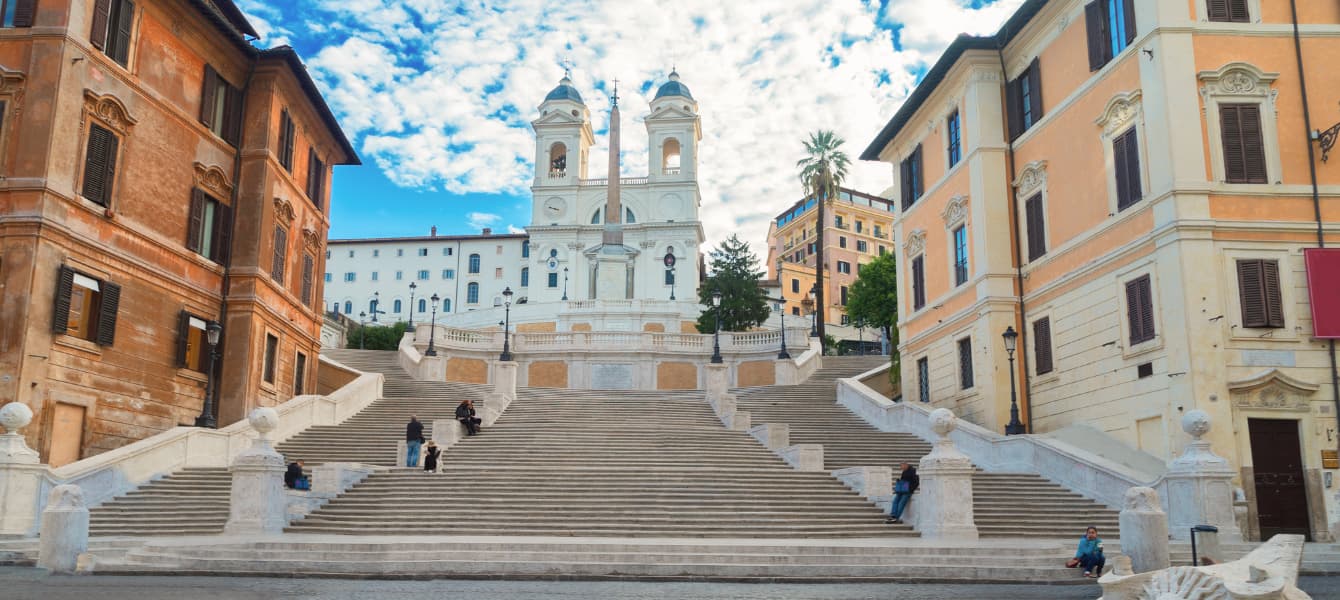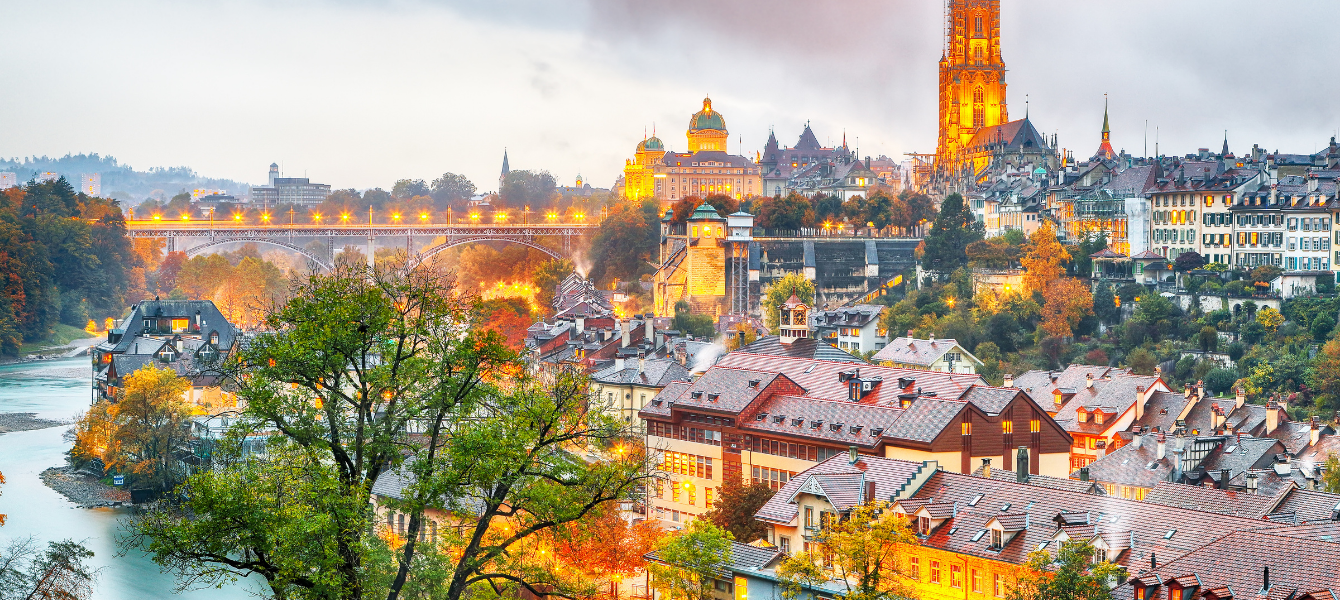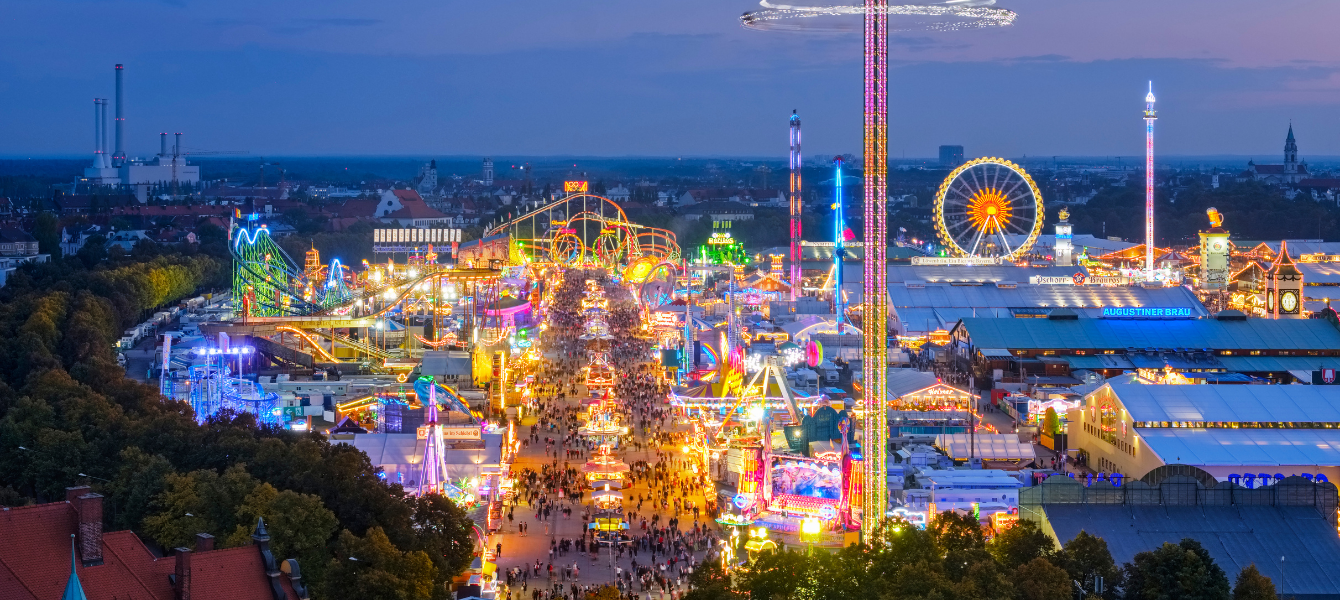Have you ever wondered where a flight of stairs could take you? Join us as we explore the famed Spanish Steps, uncovering tales that have woven themselves around the very fabric of this iconic Roman landmark.
In A Nutshell
| Formal Name | Scalinata della Trinità dei Monti (Staircase of the Holy Trinity) |
| Location | Connects Piazza di Spagna (Spanish Square) at the bottom to Piazza Trinità dei Monti (Trinity Hill Square) at the top |
| Steps | 135 in total, divided into three sections |
| Built | 1723-1725 |
| Architectural Style | Baroque |
| Designed By | Architect Francesco de Sanctis and Alessandro Specchi |
| Funded By | Interestingly, French diplomat Étienne Gueffier |
| Interesting Fact | The Spanish Steps are adorned with beautiful azalea flowers in late April for the city’s birthday. |
| In Pop Culture | The Spanish Steps were featured in Roman Holiday, starring Audrey Hepburn and Gregory Peck. |
Why Visit The Spanish Steps?
🏛️ To witness a wide cascading staircase built in the breathtaking Baroque style.
🎬 To experience an iconic movie spot popular among tourists and locals alike.
📸 To people-watch and soak in stunning panoramic views of the city below.
🏟 To be in the heart of Rome‘s bustling center, full of shopping and eating haunts.
🆓 To enjoy a free visit and explore a legendary attraction at your own pace.
Handy Information
| Address | Piazza di Spagna, 00187 Roma RM, Italy. Get Directions |
| Closest Metro | Spagna Station |
| Timings | Open 24/7 |
| Best Time to Visit | Early morning or late evening |
| Tickets | Free to visit |
Stay Near The Spanish Steps
| Luxury Stay | The St. Regis Rome |
| Economical Stay | Hotel Barocco |
| Budget Stay | Hotel De Petris |
History of the Spanish Steps
The Spanish Steps, despite their name, weren’t actually built by the Spanish.
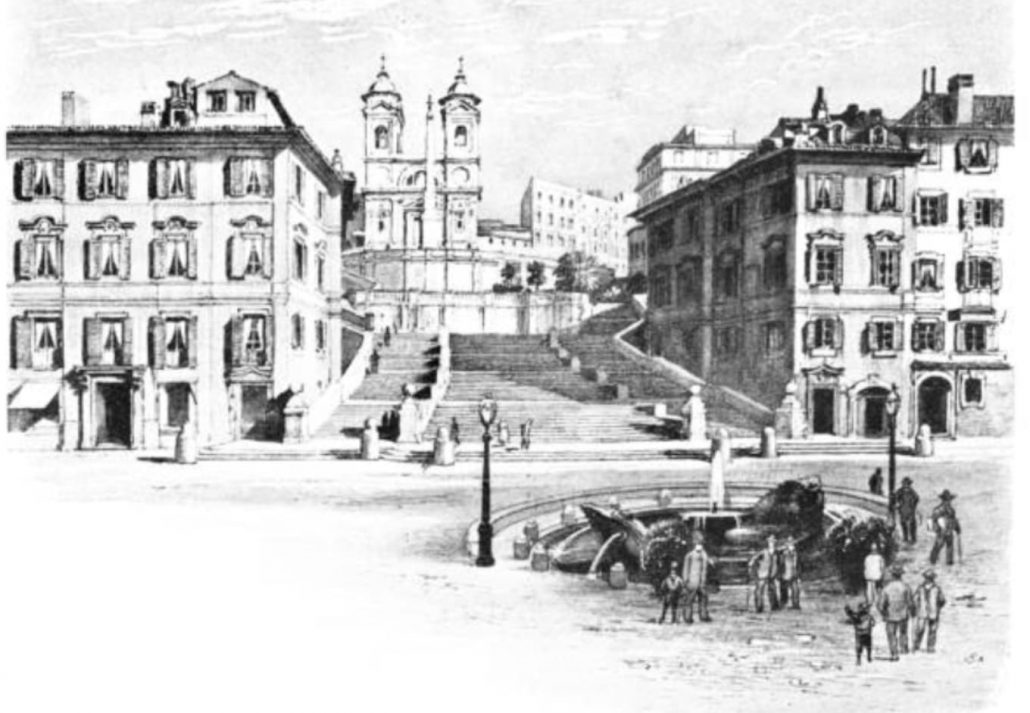
In a bid to connect the Spanish Embassy, a symbol of Spain’s growing influence, with the French-backed Trinità dei Monti Church, a competition was held to design a grand staircase. Francesco de Sanctis and Alessandro Specchi’s design emerged victorious, impressing the judges with its Baroque flair and clever use of perspective.
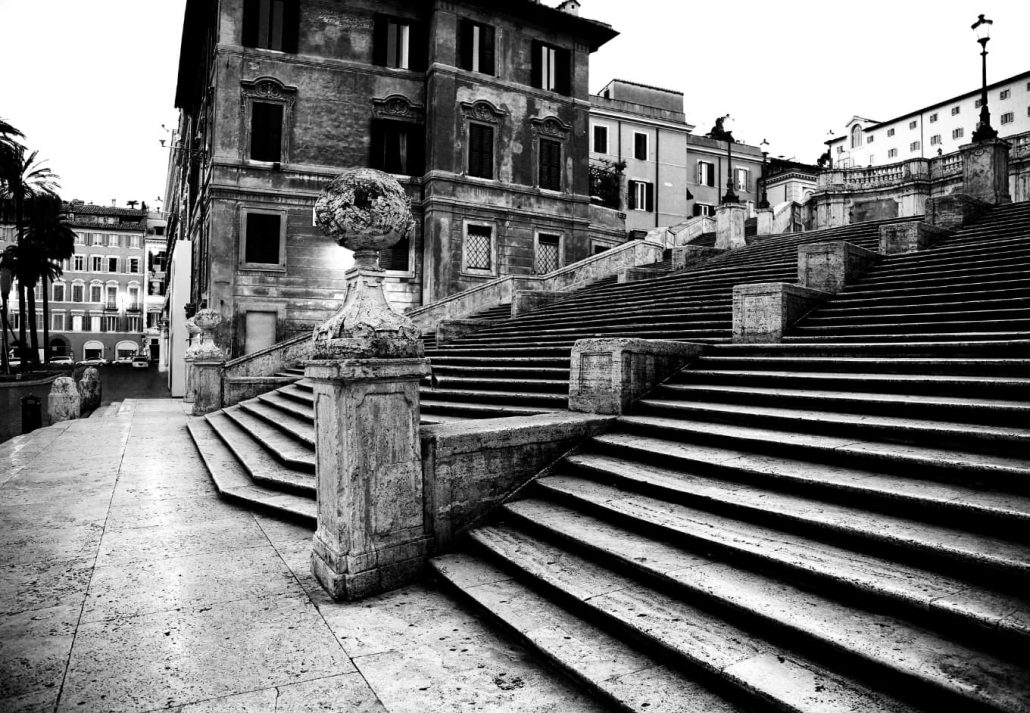
The original design included a statue of King Louis XIV of France at the top, but this was scrapped due to objections from the Pope. Interestingly, despite the competition’s intent to counter Spain‘s power, the staircase became known as the ‘Spanish Steps.’ This name likely stemmed from the unique shape of the Piazza di Spagna, which heavily influenced the staircase’s final construction and design.
Architecture of the Spanish Steps
Constructed on a steep slope, the Spanish Steps boast 135 marble steps and are built in the Baroque style, known for its grand and theatrical mood often depicting curving forms, elaborate ornamentation, and dramatic lighting effects. The Spanish Steps exemplify these characteristics with their:
Curving flights of stairs: The stairs are not straight, but rather curve gently upwards, creating a sense of movement and dynamism.
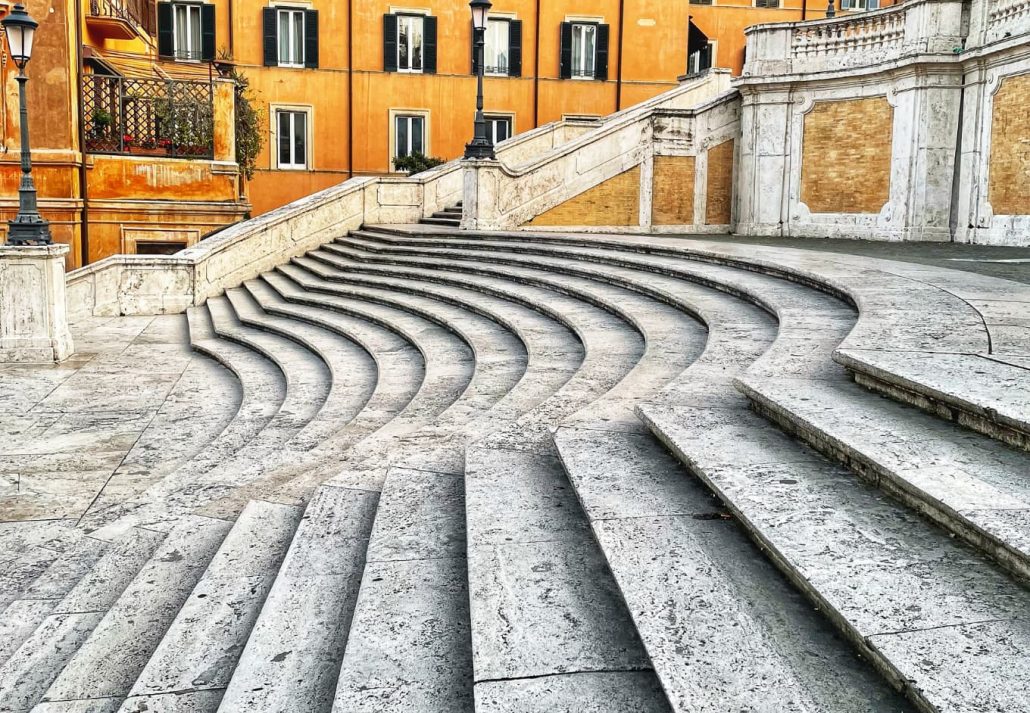
Terraces: The staircase is divided into three sections by landings, or terraces, which provide resting points for visitors and add to the visual interest of the design.
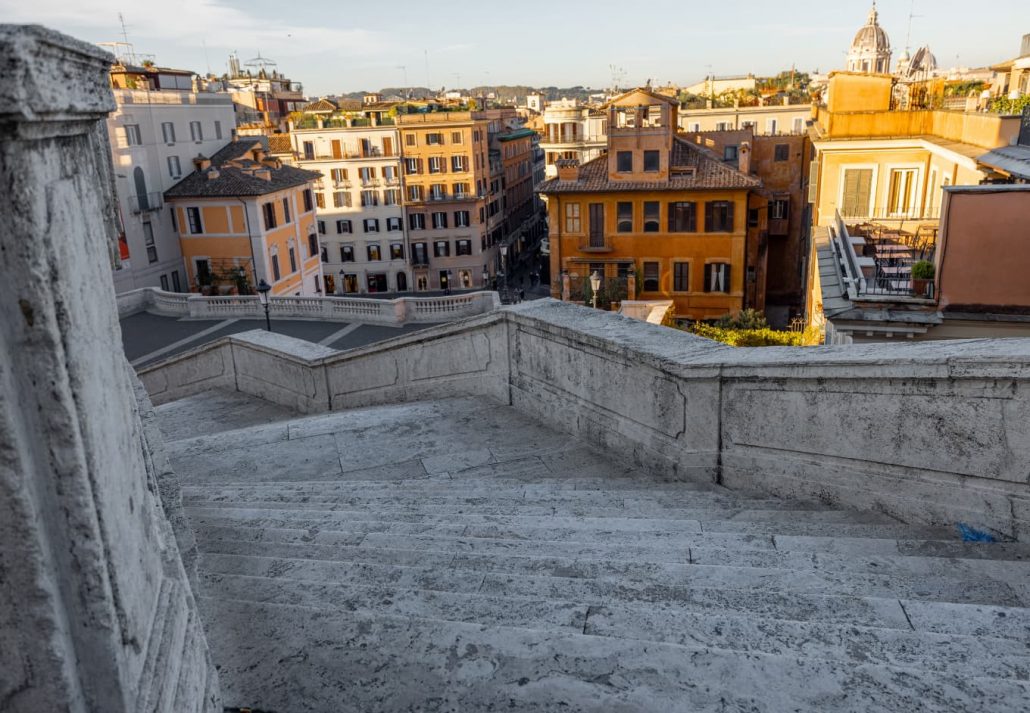
Balustrades: The stairs are lined with balustrades adorned with flowerpots, adding a touch of color and life to the staircase.
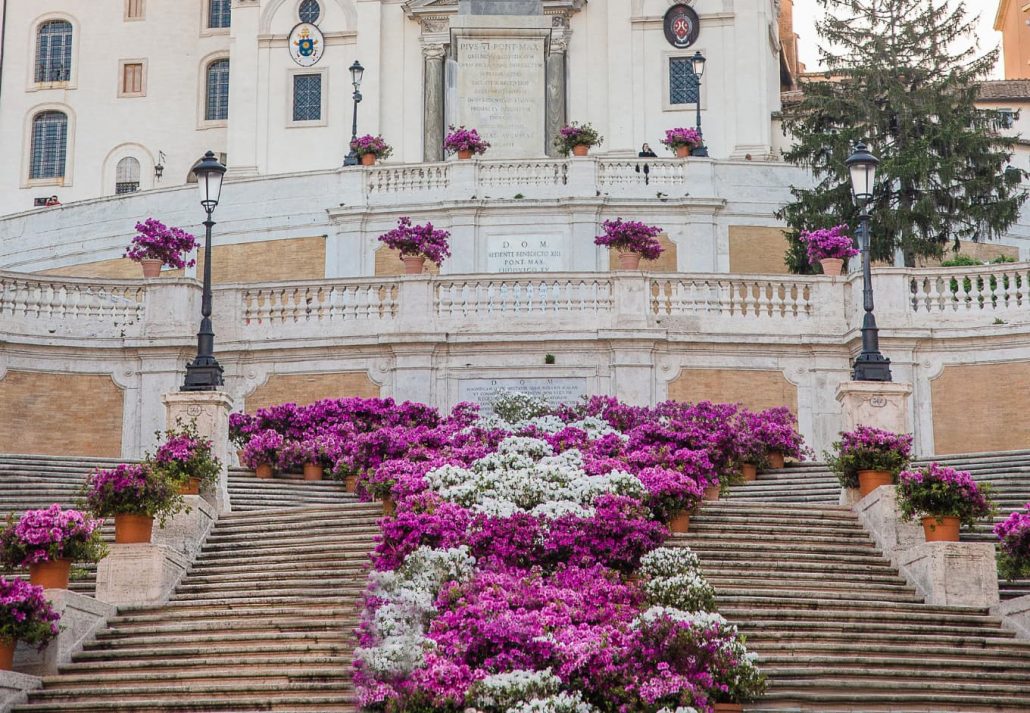
Trompe l’oeil effect: The architects used a clever optical illusion known as trompe l’oeil to make the staircase appear shorter than it actually is. This was achieved by widening the steps towards the bottom and narrowing them towards the top.
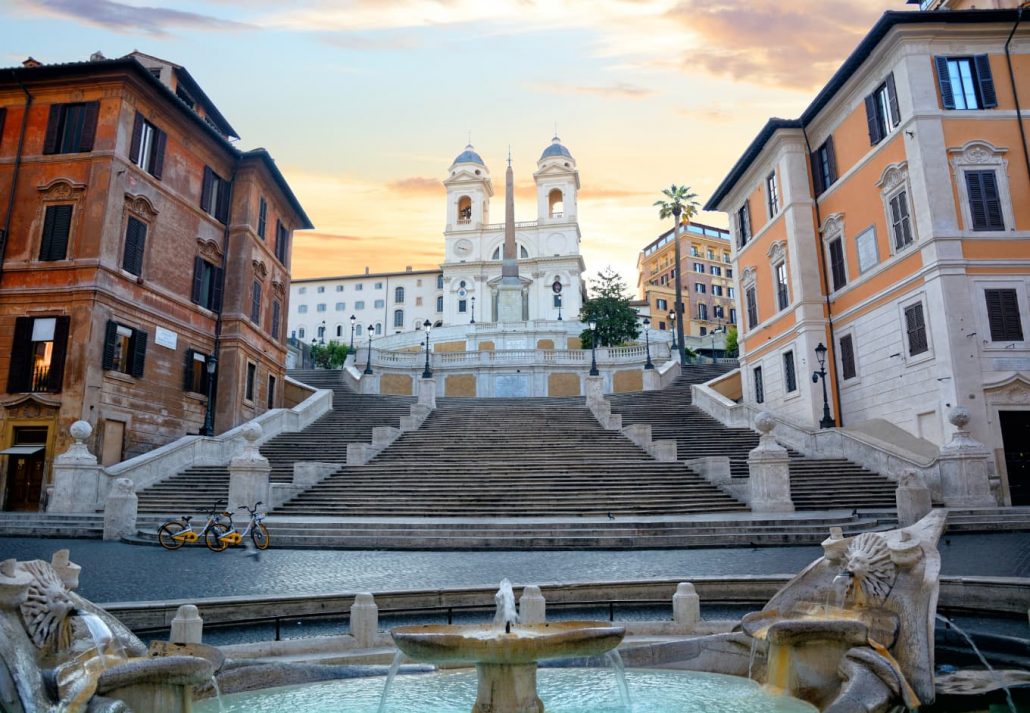
Recommended Read: Best Time To Visit Rome
Highlights of the Spanish Steps
Fontana della Barcaccia
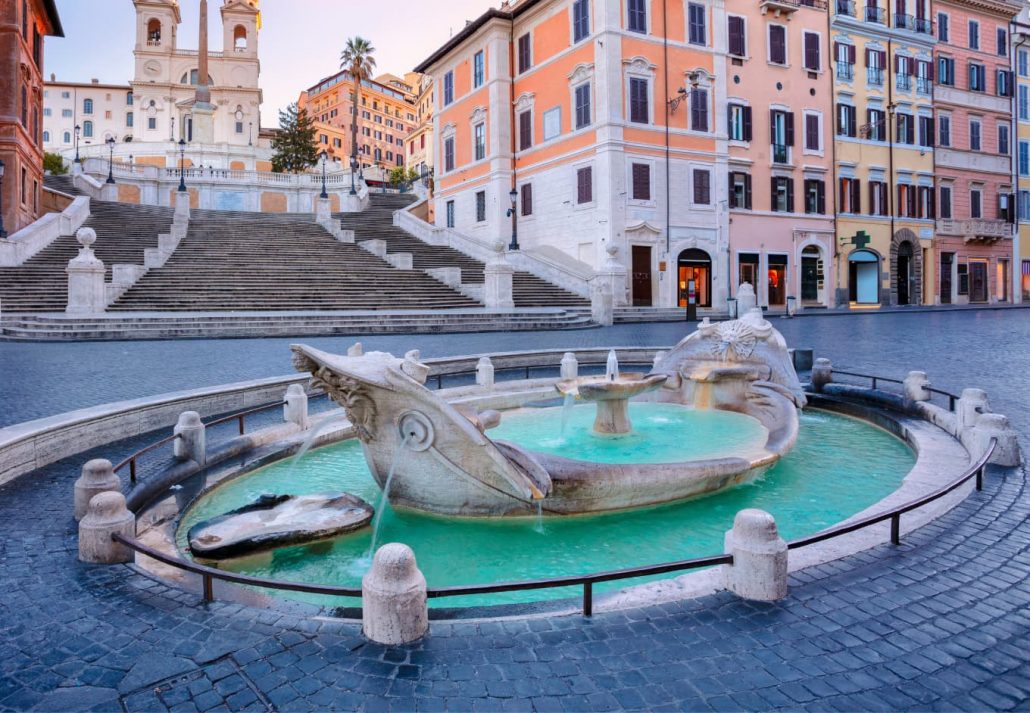
At the foot of the Spanish Steps lies the Fontana della Barcaccia, or “Fountain of the Ugly Boat.” This fountain, designed by Pietro Bernini, father of the famed Baroque sculptor Gian Lorenzo Bernini, depicts a sinking ship, adding another layer of artistic beauty to the scene.
The Keats – Shelley House
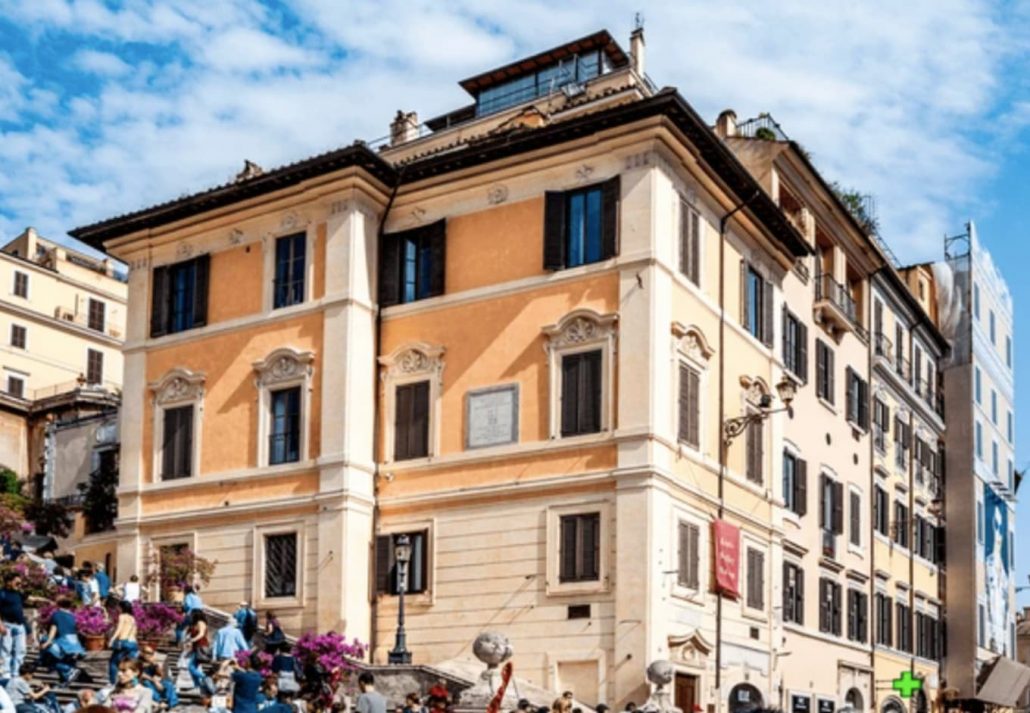
A short stroll from the iconic Spanish Steps lies the Keats-Shelley House, a treasure trove for literature lovers. This museum was the final home of Romantic English poet John Keats and offers a glimpse into his life and final days through his preserved bedroom. It also houses a vast collection of literary works dedicated to Keats, Percy Bysshe Shelley, Lord Byron, Oscar Wilde, Elizabeth Barrett, and Robert Browning. More than a museum, it’s a memorial to the Romantic era.
Column of the Immaculate Conception
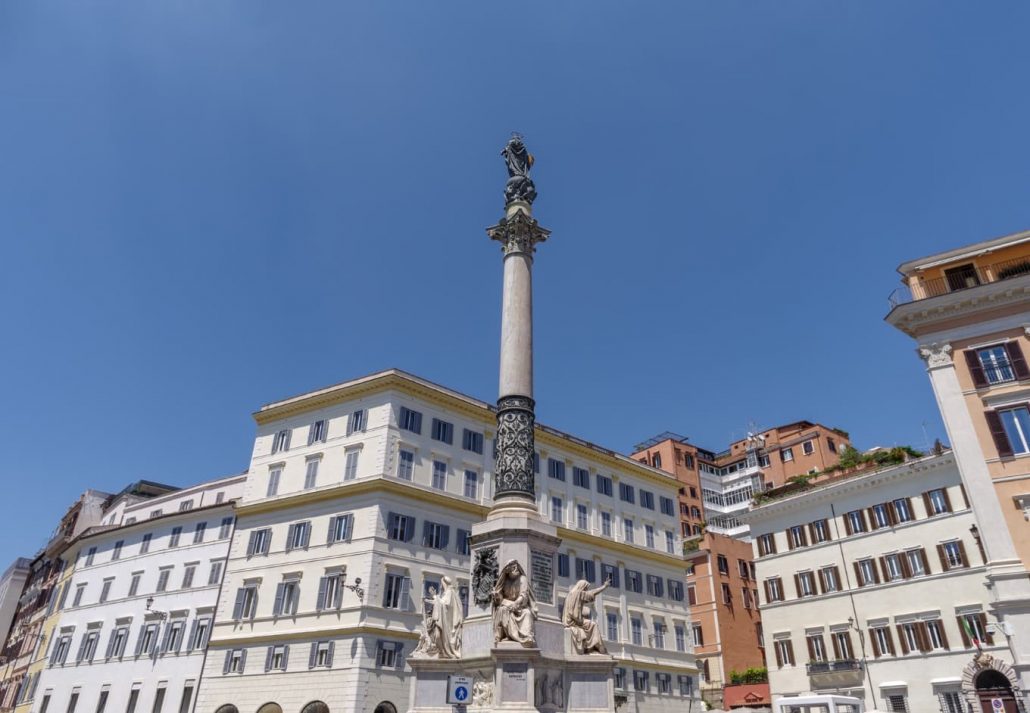
Right next to the Spanish Steps, you’ll find the Column of the Immaculate Conception. Erected in 1857, it commemorates the Catholic dogma of the Virgin Mary’s freedom from original sin from the moment of her conception. The slender column is made of a special type of marble called cipolin. The base features statues of Moses, Isaiah, David, and Ezekiel, who support the globe on which stands the Virgin Mary, symbolizing her dominion over the Earth. She is seen crushing a serpent, who represents original sin, beneath her foot.
Shopping
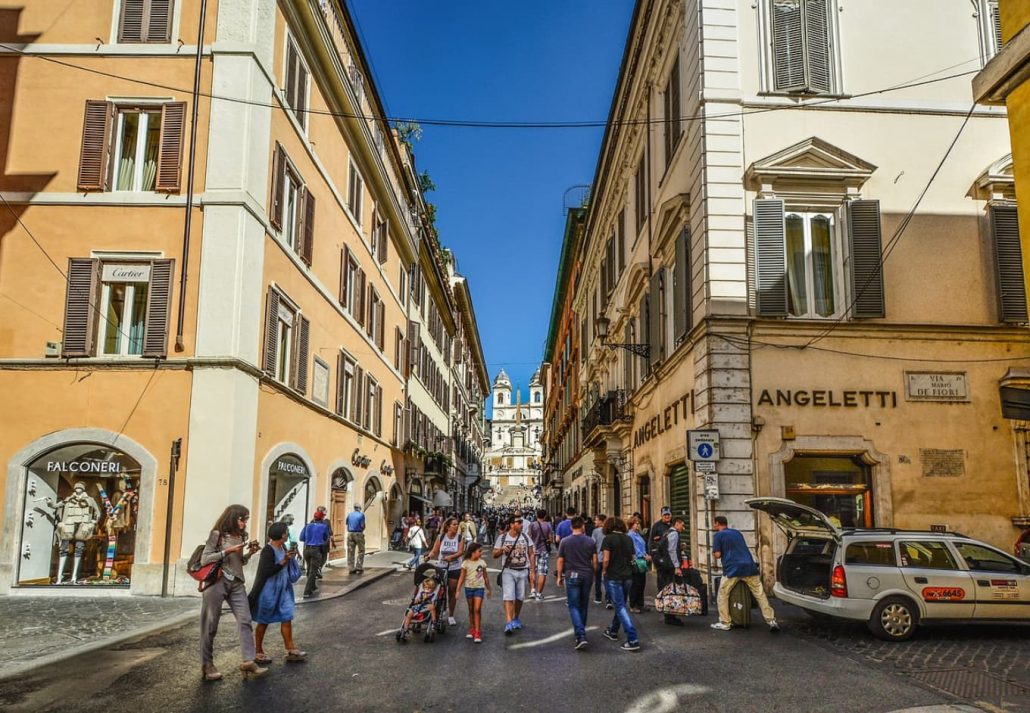
The Spanish Steps sit at the base of Piazza di Spagna, which leads directly onto Via Condotti, one of Rome’s most famous shopping streets. Here you’ll find household names like Gucci, Prada, Hermes, and Bulgari. If you’re looking for something a little more unique, head off the main streets. The side streets around the Spanish Steps are full of boutiques and independent stores selling everything from jewelry and clothing to antiques and homewares.
Know Before You Go
Getting There
– Bus: Take 116, 117, 119, and 492. These buses stop right at the bottom of the steps.
– Metro: Take Line A to Spagna Metro Station.
Read: How to Get Around Rome
Crowds
To avoid crowds, aim to reach early in the morning (7 am to 9 am) or at night. Be prepared for busier times during lunch and sunset.
Seating
There are ledges along the way where you can sit and rest or people-watch. However, sitting on the steps themselves is prohibited.
Food and drinks
Eating and drinking are forbidden on the steps, but there are plenty of cafes and restaurants in the surrounding piazza.
Footwear
The steps are made of travertine marble, which can be slippery, so be sure to wear comfortable shoes with good traction.
Nearby Attractions
Trinità dei Monti Church, Trevi Fountain, Pantheon
Frequently Asked Questions
Where are the Spanish Steps located?
The Spanish Steps connect Piazza di Spagna (Spanish Square) at the bottom to Piazza Trinità dei Monti (Trinity Hill Square) at the top.
Why are they called the Spanish Steps?
Though financed by a Frenchman, the Spanish Steps are named after the nearby Spanish Embassy to the Holy See. The name likely stemmed from the unique shape of the Piazza di Spagna, which heavily influenced the staircase’s final construction and design.
Are there any fees to visit the Spanish Steps?
No, there is no entrance fee to visit and walk on the Spanish Steps.
What are the opening hours of the Spanish Steps?
The Spanish Steps are a public landmark and are accessible 24 hours a day, 7 days a week.
What other attractions are near the Spanish Steps?
Many popular attractions are close by, including the Trevi Fountain, the Pantheon, the Colosseum, and Piazza Venezia.
CuddlyNest provides all accommodations to all travelers at the best price. Find unlimited travel inspiration on our blogs and social media channels Facebook, Instagram, and Pinterest.
Additional Reading:
Best Attractions In Rome
Fantastic Hotels In Rome
A Foodie’s Guide To Rome
